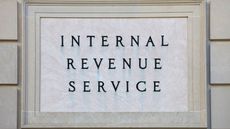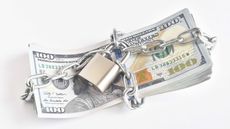What Is a High-Yield Savings Account?
A high-yield account could grow your savings faster than most traditional savings accounts.


A high-yield savings account is essentially the same as a traditional savings account with one key difference — high-yield savings accounts pay a higher than average APY on deposits. An APY, or annual percentage yield, is the amount of interest earned on an account in one year. The APY for high-yield savings accounts can be anywhere from 3% to 5%, much higher than that of a traditional account. With Wednesday's Fed rate hike of 0.25%, to a range of 4.75% to 5%, savings rates could go higher.
Since the rate of return on these accounts is better, you'll be able to accrue more cash over time.
When should you use a high-yield account?
High-yield savings accounts are great options for emergency funds and short-term savings goals. Unlike CDs, which have penalties if money is withdrawn before a certain time frame (typically a year or more) money in your savings account is more liquid. You can usually access and withdraw funds from your high-yield account up to six times a month without incurring penalties.
Some pros of high-yield accounts
Higher APYs: Since high-yield savings accounts have higher APYs than traditional savings accounts, you’ll accrue more interest over time. Plus, interest in these accounts is compounded daily.
Safety: Many high-yield accounts are FDIC insured, meaning that if something were to happen to the bank your account is with, your money will still be safe.
Accessibility: While there are limitations to the number of free withdrawals you can make from a savings account, your money is still readily accessible whenever needed.
Some cons of high-yield accounts
Harder to access than traditional savings accounts: If you have a savings account that's with a different bank than your checking account, you may have to wait a few days for funds to transfer from one to the other. Plus, you won’t be able to easily view account details for both accounts in one place.
Not suited for long-term goals: If you’re looking to save for long-term goals, like retirement, other investments, like stocks, are usually a better choice for your money. The rate of inflation can be higher than what you accrue in interest.
Variable interest rates: Since interest rates are variable, the APY on the account can decrease from the rate it was when you opened the account.
Online banks: Since most high-yield accounts are offered by online banks, you likely won’t have branch access so contacting customer service can be more challenging.
How much can I earn in a high-yield account?
Many high-yield savings accounts can earn a high APY on balances, but what does this actually look like?
Let’s say you put $10,000 into an account with a 3% APY. After a year, your balance would accrue $300. If you’re looking to save for an upcoming purchase, or just want to maximize your savings as best as possible, it’s a very simple way to do just that.
How to open a high-yield savings account
You’ll open a high-yield savings account in the same way you’d open a traditional one, except you may have to forgo your brick-and-mortar bank for an online bank or credit union, as these are where high-yield accounts are typically offered.
First, you’ll need to opt for an account that works best for you. To do so, you’ll need to take into account not only the APY of the account but also the associated fees. Some accounts have minimum deposit limits or balance requirements, which can charge fees that can potentially take a chunk out of your accrued savings if these requirements are failed to be met.
After taking this into consideration and choosing an account, you’ll then be required to submit an application, providing personal information such as your Social Security number, home address and driver's license number. Once your account is open and money deposited, it functions the same as a typical savings account — adding or withdrawing funds, as you please.
Bottom line
If you’re looking for an easy way to maximize your savings — try transferring your cash to a high-yield savings account. You’ll have a higher rate of return than that of a traditional savings account, earning you more in the long run without having to do anything.

Erin pairs personal experience with research and is passionate about sharing personal finance advice with others. Previously, she was a freelancer focusing on the credit card side of finance, but has branched out since then to cover other aspects of personal finance. Erin is well-versed in traditional media with reporting, interviewing and research, as well as using graphic design and video and audio storytelling to share with her readers.
-
-
 IRS is Targeting Promoters of Abusive Tax Schemes Kiplinger Tax Letter
IRS is Targeting Promoters of Abusive Tax Schemes Kiplinger Tax LetterTax Letter Tax schemes range from basic tax dodges to highly complex transactions.
By Joy Taylor • Published
-
 How to Save on Prescription Medication
How to Save on Prescription MedicationHow you can save money on prescription medication amidst rising prices.
By Erin Bendig • Published
-
 Trusting Fintech: Four Critical Moves to Protect Yourself
Trusting Fintech: Four Critical Moves to Protect YourselfA few relatively easy steps can help you safeguard your money when using bank and budgeting apps and other financial technology.
By Shane W. Cummings, CFP®, AIF® • Published
-
 Four Steps to Prepare Your Finances for Divorce
Four Steps to Prepare Your Finances for DivorceDivorce is rarely easy, but getting financial paperwork in order, working with professionals and making tough decisions now can take some of the stress out of it.
By Marcy Keckler, CFP®, CRPC® • Published
-
 1-Year CD Rates June 2023
1-Year CD Rates June 2023Savings Many 1-year CD accounts are already offering rates of 5% or more. We look at the options on the market.
By Erin Bendig • Last updated
-
 How to Open a Savings Account Online
How to Open a Savings Account OnlineYou may be wondering how to open a savings account online. The process is usually simple and straightforward — with just a few steps you’ll be able to start saving your hard-earned cash.
By Erin Bendig • Published
-
 10 Easily Fixable, But Often Overlooked, Financial Planning Items
10 Easily Fixable, But Often Overlooked, Financial Planning Itemspersonal finance It’s easy to let important financial tasks slip your mind, so take a minute to check this list for any to-do items you may have forgotten. It could make a big difference in your bottom line.
By Roxanne Alexander, CFP®, CAIA, AIF®, ADPA® • Published
-
 How to Keep Your Savings Safe
How to Keep Your Savings Safesavings If you want to keep your savings safe but they exceed FDIC and NCUA limits, it's time to open multiple accounts, preferably ones with high yields.
By Rivan V. Stinson • Last updated
-
 What is FDIC, NCUA and SIPC Insurance — What Are the Limits?
What is FDIC, NCUA and SIPC Insurance — What Are the Limits?FDIC, NCUA, and SIPC insurance provides important protection for your savings and investments but what are the limits? How much of your money is covered?
By Erin Bendig • Last updated
-
 Money Market Account or Money Market Fund? How to Choose
Money Market Account or Money Market Fund? How to Choosemoney market accounts Whether you choose a money market account or money market fund largely depends on the money's purpose.
By Lisa Gerstner • Last updated









